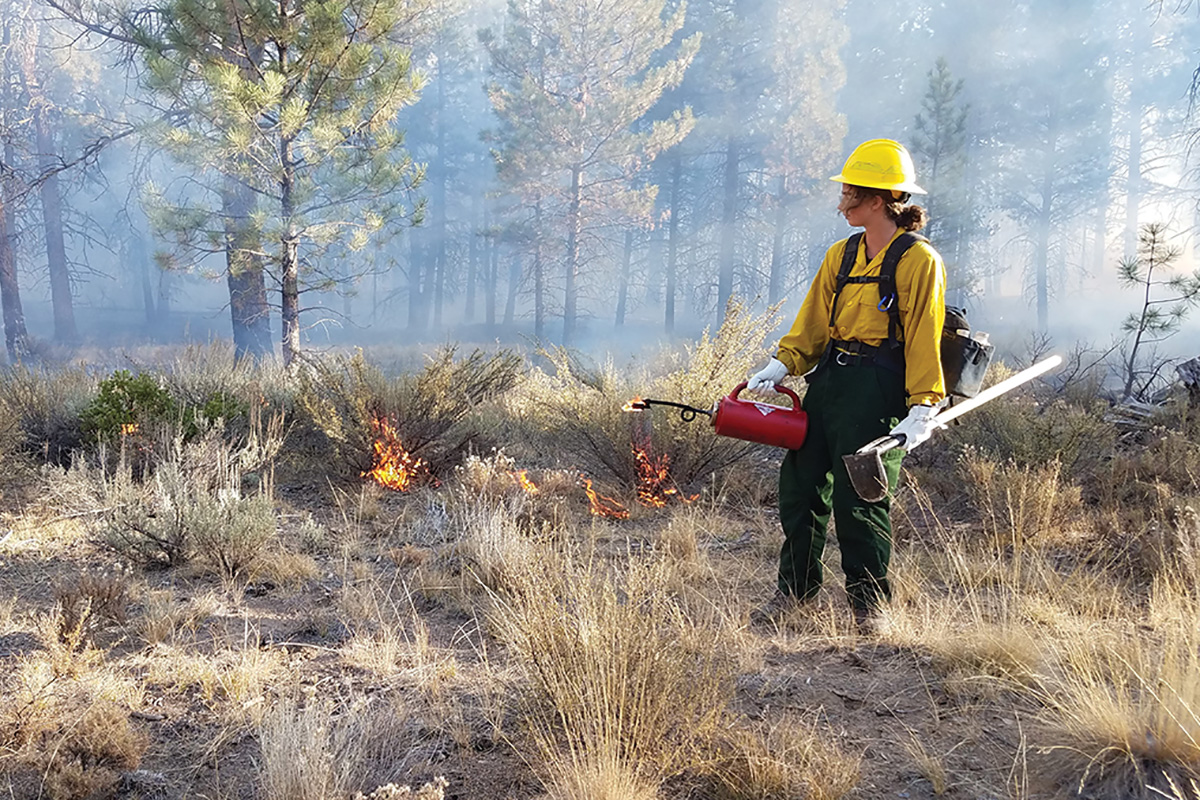This article was originally published in The Hill.
The U.S. Forest Service’s job of tackling the wildfire crisis just got a lot harder. Last month, legislation that shielded the agency from disruptive lawsuits expired. If Congress does not act soon, the Forest Service predicts urgently needed forest restoration efforts could be set back up to a decade.
The timing could not be worse. The Forest Service faces an 80-million-acre backlog in needed forest restoration, which fuels a wildfire crisis that annually burns millions of acres, scorches wildlife habitat, and threatens Western communities. Responding to the crisis, the Biden administration began work last year on a 10-year strategy to increase its forest-restoration efforts. Now, projects to thin the overgrown vegetation and carry out controlled burns that rejuvenate forests could become mired in red tape and lengthy legal challenges.
When the Forest Service designs and implements a forest restoration project, it carefully considers how that project will affect endangered and threatened species. And if a new species is listed, critical habitat is designated, or other new information arises while a project is being developed or implemented, the Service updates that analysis.
In 2015, a group (which critics consider “radical” environmentalists) asserted in a lawsuit that this isn’t enough. They argued that the Endangered Species Act requires the agency to halt projects—even those that might help them—while it goes back and reanalyzes its general forest plan, a planning document that remains in place for decades and has no on-the-ground impacts. Criticizing the theory, Sen. Angus King (I-Maine) has analogized it to redoing a city’s zoning plan every time an issue arises in a single neighborhood, even if that issue could be and already has been dealt with at the neighborhood level.
Initially, the far-fetched argument seemed of little concern. A federal appeals court had recently and explicitly rejected it, and the Supreme Court had rejected an identical argument under a similar environmental law. Unfortunately, the Ninth Circuit—which has jurisdiction over the entire West Coast plus Arizona, Idaho, and Montana—adopted the theory in a case called Cottonwood v. Forest Service.
The Obama administration warned that Cottonwood could “cripple” the Forest Service’s ability to restore forests and distract the Fish and Wildlife Service from recovering species. Congress heeded this warning by enacting legislation that, for five years, shielded the Forest Service from similar litigation. Unfortunately, that temporary fix expired last month.
During a congressional hearing coinciding with the temporary fix’s expiration, Forest Service Deputy Chief Chris French estimated that 87 forest plans across the West could now be challenged, and the restoration work being proposed or implemented in those forests could grind to a halt. Completing unnecessary and duplicative analysis for all these plans would take “somewhere between 5 and 10 years and tens of millions of dollars,” the Biden administration official estimated. That’s time and money the Forest Service does not have when a catastrophic fire could start at any moment.
What’s most frustrating about the Cottonwood ruling is that the litigation and costly analyses do not actually help conserve and recover endangered species. The Forest Service already fully analyzes any impacts when considering and implementing specific projects. Indeed, the plan-level analyses performed before the temporary fix was enacted resulted in no changes to any projects. “There was,” Deputy Chief French explained, “really no conservation benefit.”
However, this disruptive litigation can directly harm species by delaying projects essential to conserving their habitat. In 2019, a Cottonwood-related lawsuit shut down forest restoration projects throughout New Mexico’s and Arizona’s national forests for more than a year. That delay appears to have contributed to a prescribed fire in New Mexico growing out of control and becoming last year’s Hermit’s Peak fire, which burned 340,000 acres of forest, destroyed wildlife habitat, and degraded water quality. No one wins if a species’ habitat goes up in smoke while the Forest Service is bogged down in litigation and paperwork.
That’s why a wide variety of conservation organizations support a permanent fix to the Cottonwood decision, including my organization, the Property and Environment Research Center, along with the Rocky Mountain Elk Foundation, the Wildlife Society, and Theodore Roosevelt Conservation Partnership. And it’s why, last year, the Senate Energy and Natural Resources Committee approved a permanent fix on a bipartisan vote. With broad support for a permanent fix and a clear need for immediate action, it’s time for Congress to address this problem and allow the Forest Service to get back to restoring forests and recovering species.




